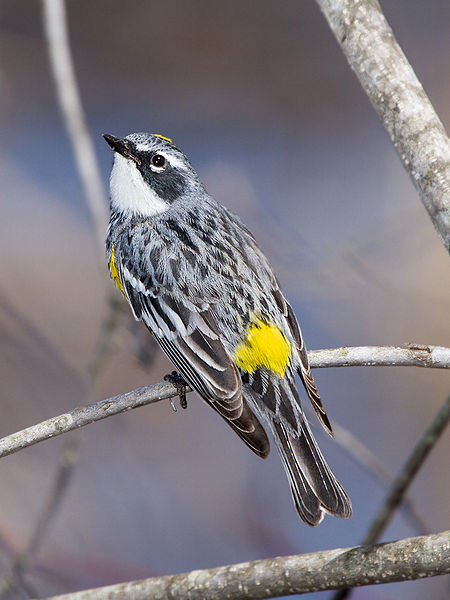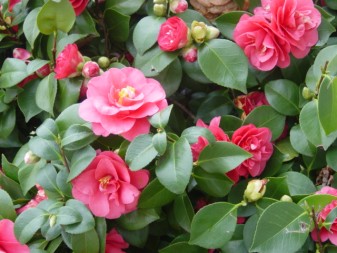
There are some bright spots on these cold, wet winter days and they’re flitting about in my camellia trees: yellow-rumped warblers. These little flying gems bring their acrobatic flashes of color to the otherwise drab and muted landscape in its winter garb. To top it off, their feeding strategies are a case study that flexibility leads to success.
These birds have the endearing name of “butter butts” for a yellow patch at the base of their tail. You can find them throughout the Bay Area in winter. Drawn by the waxy berries of the Myricaceae (myrtle and bayberry) family and winter flowers such as camellia, they spend winters near us in neighborhood parks and yards. Most of the time, you don’t even need binoculars to see them.

Yellow-rumped warblers are designated a "Species of Least Concern" with a stable population in no danger of disappearing. Why are they so successful? Their first secret to success is their rare ability to digest the wax of berries in the myrtle family. These waxy berries, once used by Colonial Americans to make candles, store fat that’s usually inaccessible for energy. These warblers can digest it and put that wax-fat to good use; they can winter further north than other warblers. On both coasts of North America their wintering territory mirrors the presence of myrtles, sometimes in otherwise inhospitable areas covered in snow and ice. Some of the species, perhaps those that have discovered the wonders of an endless summer, migrate further south as far as Central America. The second secret to the warblers success is a flexible feeding strategy. They can glean insects from leaves and bark, flycatch in mid-air, forage along shorelines for aquatic insects, drink nectar and eat pollen from flowers. They may do all of these things, appropriate to the abundance of the season, over the course of a year. Too bad there aren’t training courses led by these little “butter butts” for some of our endangered bird species that are trapped in their niche feeding strategies. Imagine: clapper rails birds “job shadowing” a group of yellow-rumped warblers to expand their feeding options!
Now that we’ve passed the shortest day of the year, enjoy the lengthening daylight. The warblers and camellias remind us that spring is just a few months away. To learn more about our local birds and their habitats come along on an East Bay Regional Park naturalist program or visit your local Audubon Society website to see what they have to offer near you. Don’t forget about the many ways you can help track bird and plant activities around you; check out Citizen Science programs and get involved.